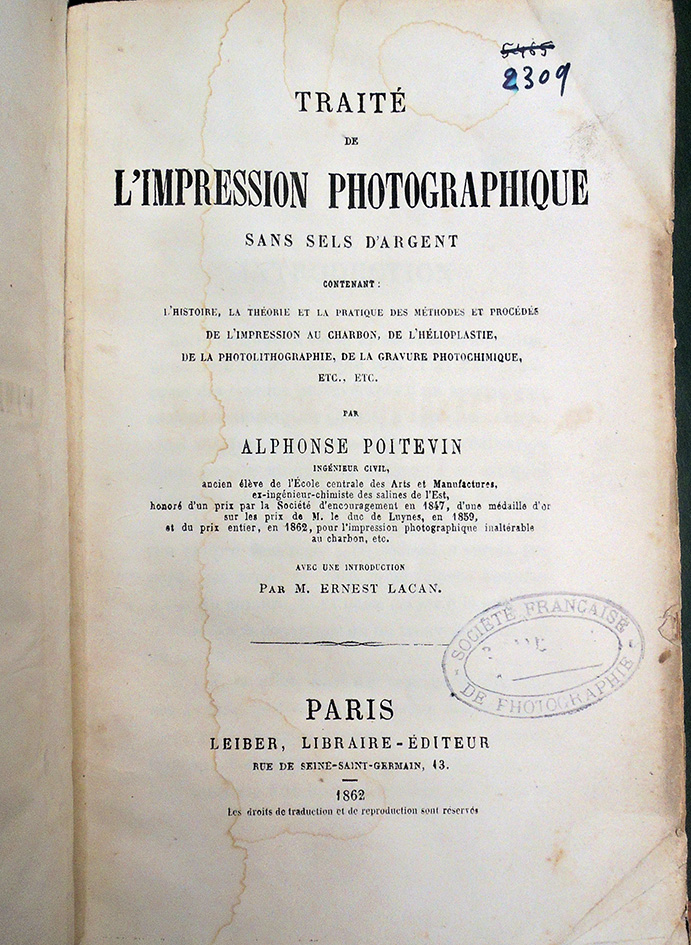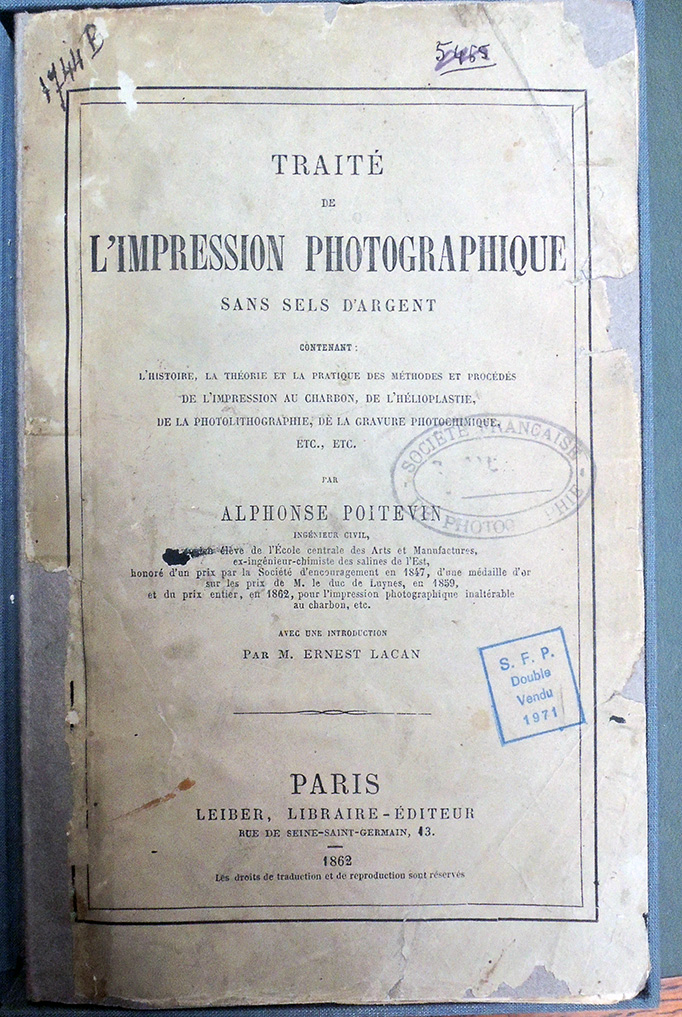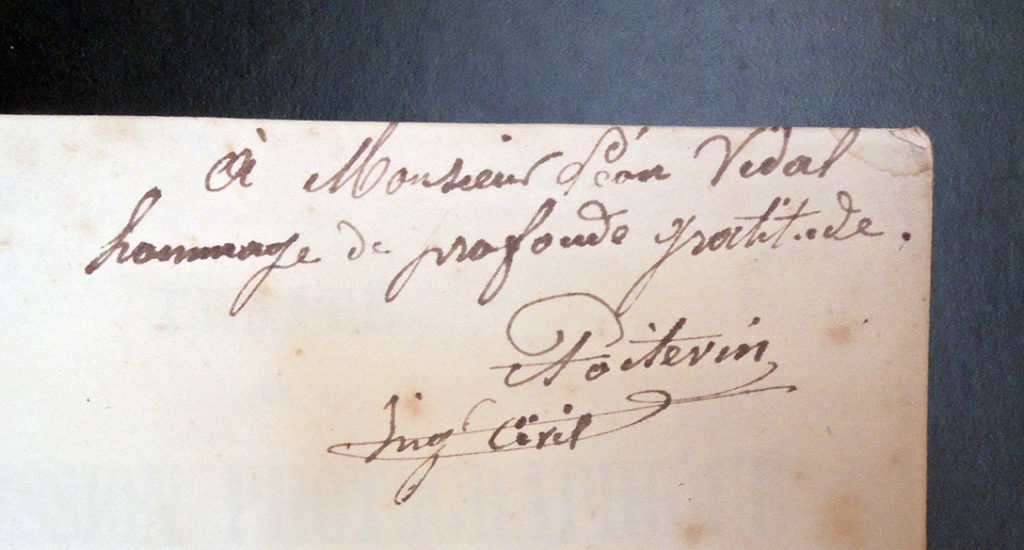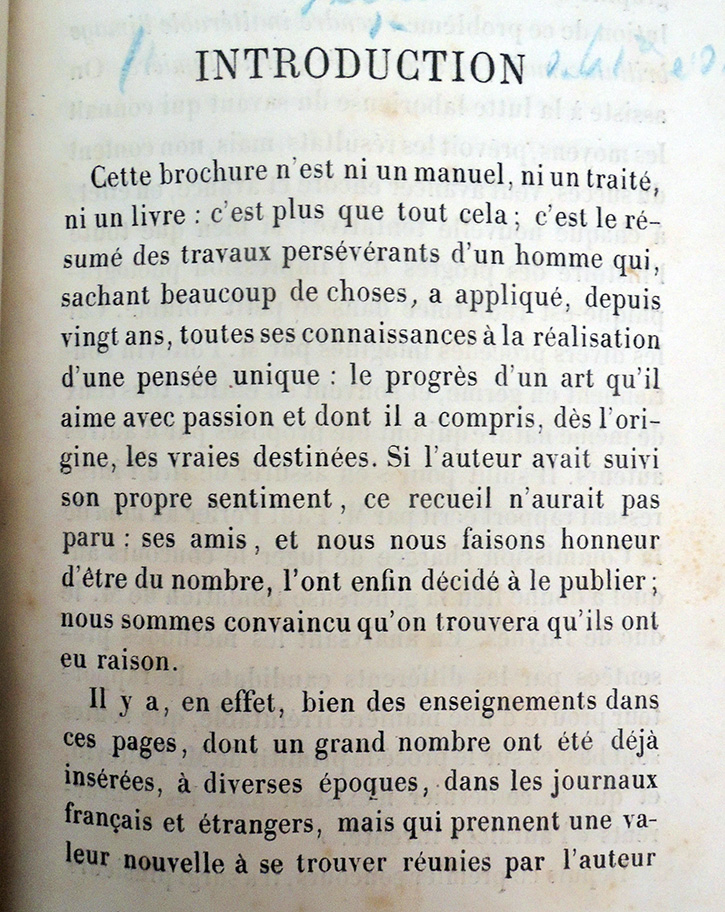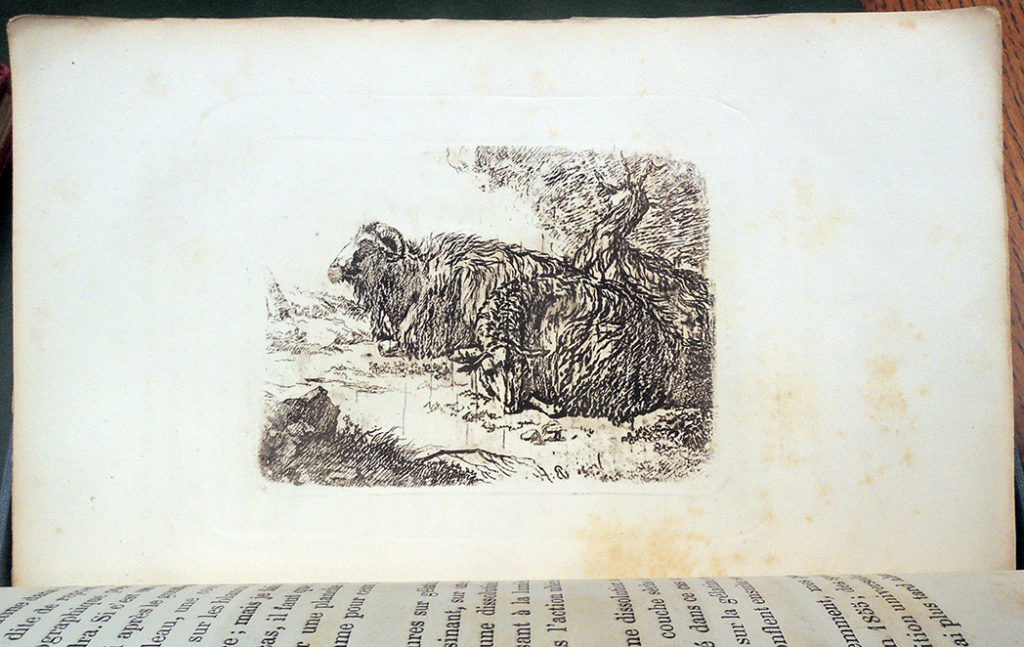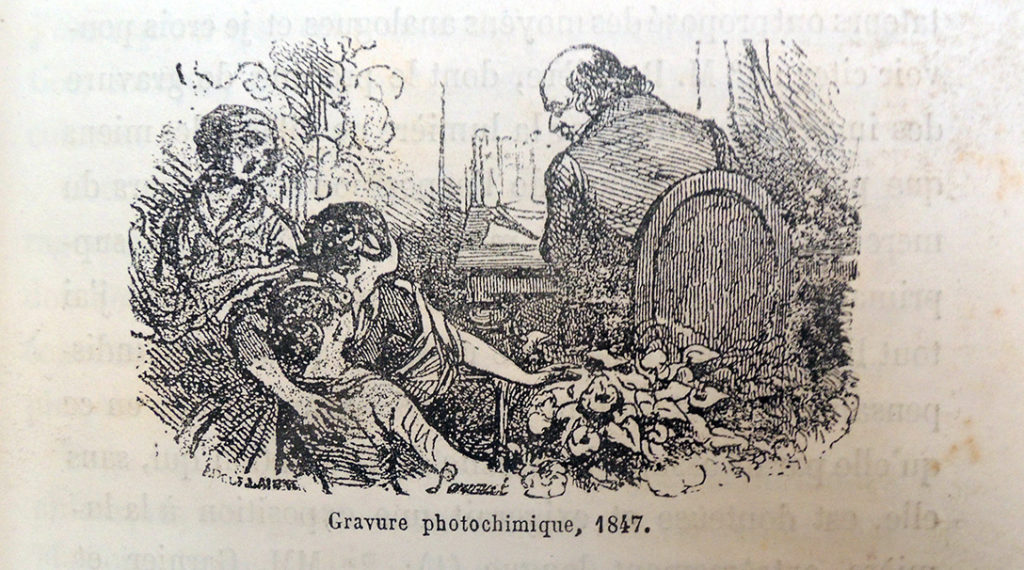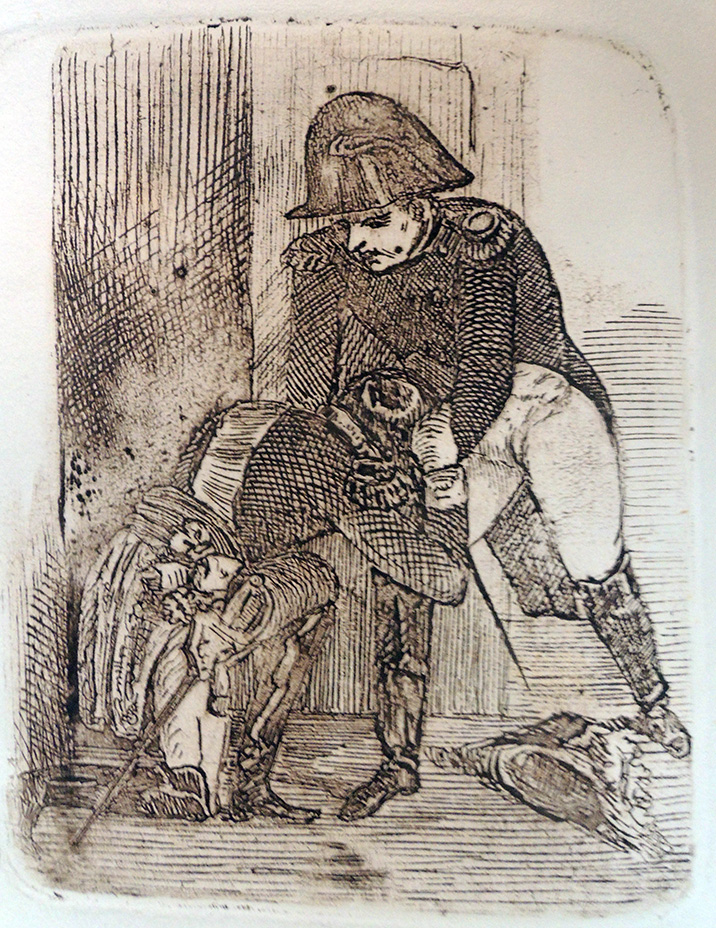
Each of Princeton’s two newly acquired copies of Alphonse Poitevin’s Traité de l’impression photographique sans sels d’argent [=Manual on photographic printing without silver salts] were published in 1862 with an introduction by Ernest Lacan (1829-1879), but have a different set of illustrations. This is not uncommon, since many collectors over the years have removed the plates from some copies and pasted in prints in others.
Between the two volumes, Princeton not only has all the recorded prints in other copies but holds this studio portrait [above] not documented in any other copy of the book. The unidentified gentlemen include Poitevin on the left, Lacan in the middle, and his editor Léon Vidal (1833–1906) on the right. This volume also bears a signed presentation “Á Monsieur Léon Vidal, hommage de profonde gratitude, Poitevin.”
Trained as a chemist, Poitevin worked for the Mines Nationales de l’Est and later, at a silver mine at Kefoun-Theboul in Africa. He became interested in photography, experimenting with methods of photochemical engraving using silver or gold on metal plates. His discoveries in the action of light on bichromated gelatin laid the basis for photolithography, the carbon process, and more. Several of his processes were patented, including collotypes and carbon printing (1855-56), which led to this handbook on non-silver and direct positive processes. See also: https://www.princeton.edu/~graphicarts/2011/07/alphonse_louis_poitevin.html
Alphonse-Louis Poitevin (1819-1882), Traité de l’impression photographique sans sels d’argent: contenant l’histoire, la théorie et la pratique des méthodes et procédés de l’impression au charbon, de l’hélioplastie… [=Manual on photographic printing without silver salts: containing the history, theory and practice of methods and processes of carbon printing, helioplasty …]; avec une introduction par M. Ernest Lacan (Paris: Leiber, 1862). Graphic Arts Collection GAX 2020- in process

